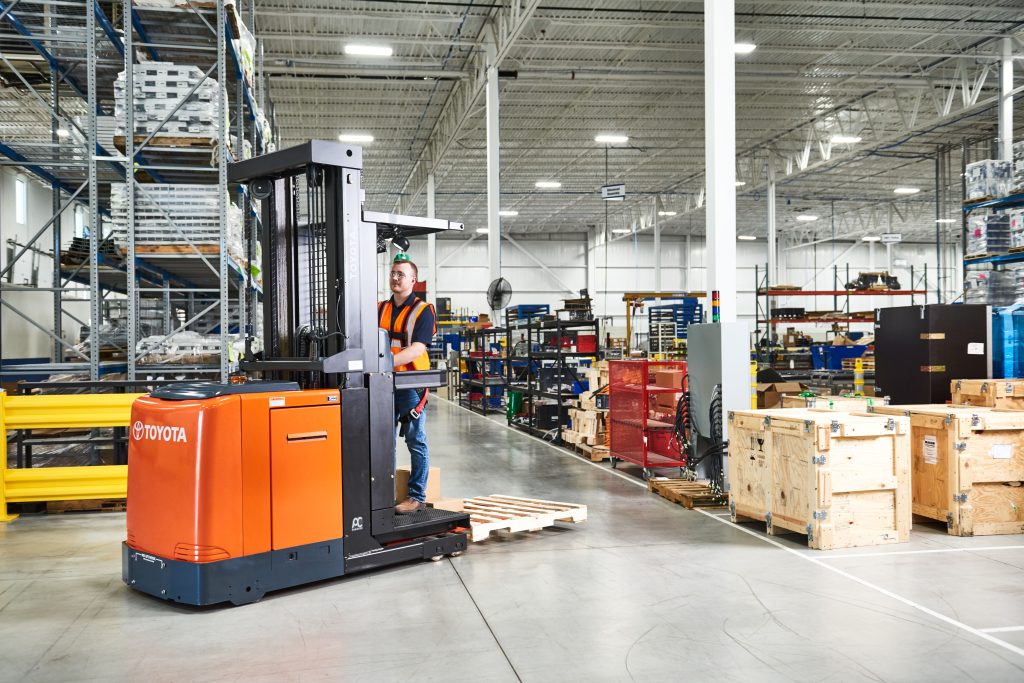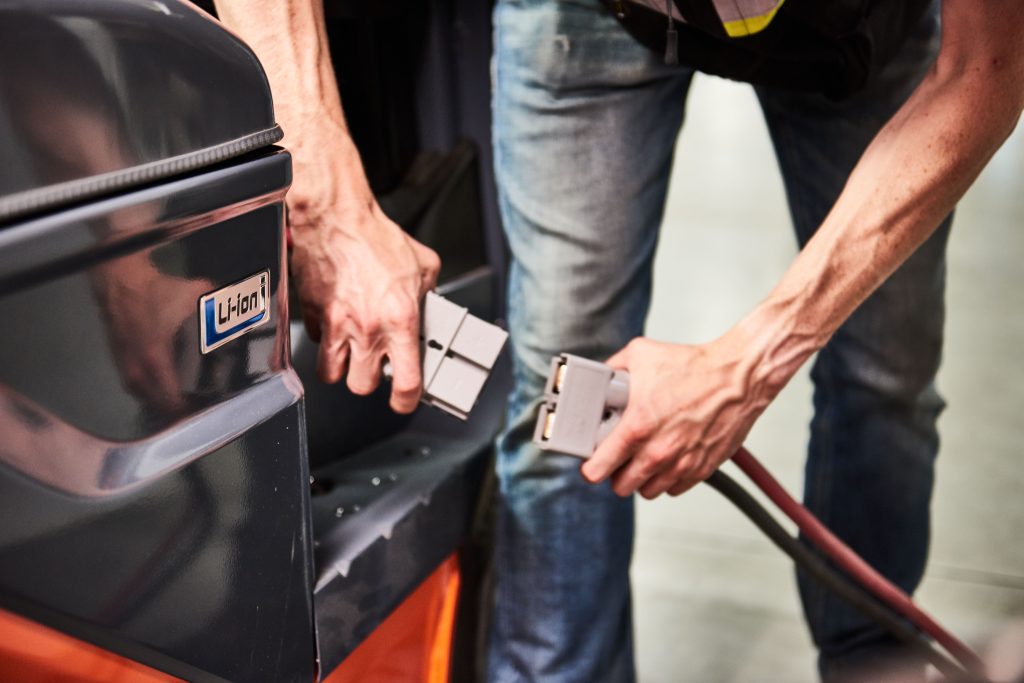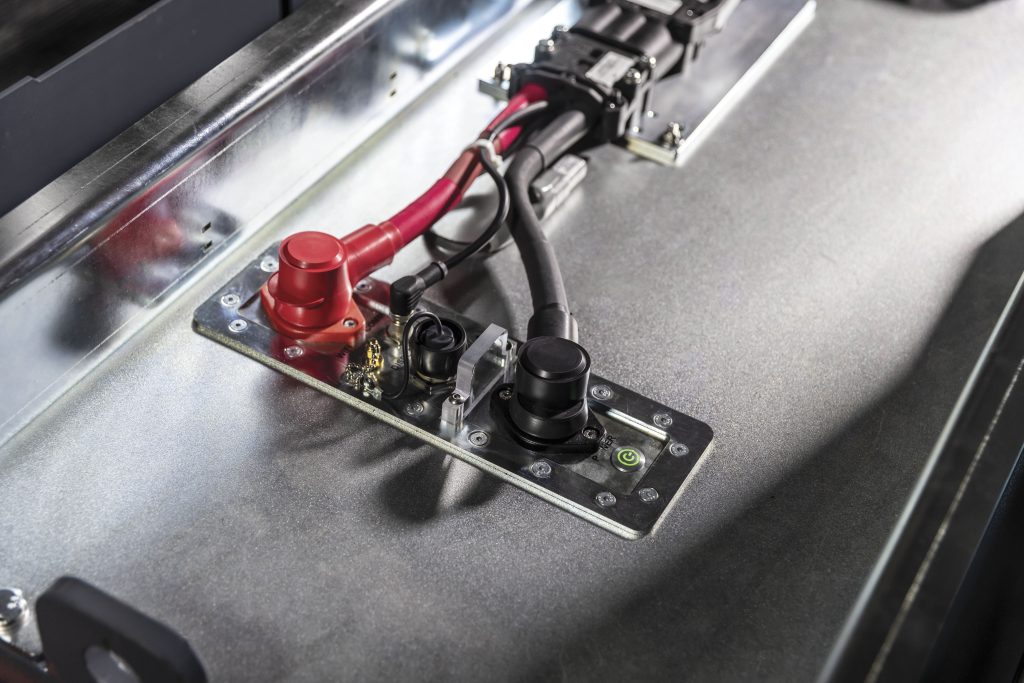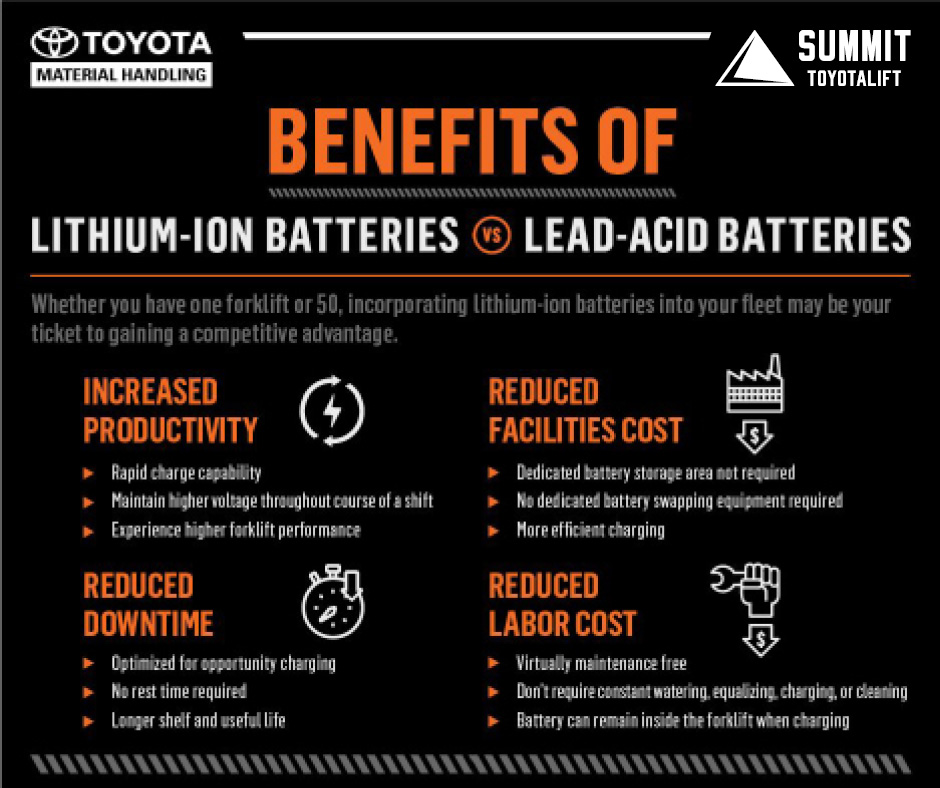
Warehouses Benefit from Opportunity Charging
Opportunity charging is a process in which Lithium-Ion batteries (LiB) are charged several times during the work cycle, (usually up to eight hours). This allows one battery to remain in the vehicle much longer than traditional lead-acid batteries or other power sources. The objective is to eliminate the need to change spent batteries between shifts, allowing your warehouse to run more efficiently and effectively.
Running forklifts through multiple shifts a day in warehouse operations can be highly taxing. Lead-acid batteries charge for approximately eight hours, cool down for eight hours, and run for eight hours. With the emergence of lithium-ion batteries, opportunity charging has become more popular because of its operational benefits.

Which Battery Type is Best Suited for Opportunity Charging?
While opportunity charging is available for forklifts with lithium-ion batteries and lead-acid batteries, it is much better suited for LiB. With lead-acid batteries, opportunity charging can have negative side effects, such as shortened battery life, and increased maintenance requirements. With lithium-ion batteries, opportunity charging can actually extend its overall life, and there is no need for increased battery maintenance. With opportunity charging, LiB stays in the truck for multiple shifts while being charged. It also takes advantage of breaks to charge the forklift.
For example, when your employees are on lunch, taking a break, or switching shifts, the forklift can be plugged in and charged. When the operator returns, the forklift should have enough power until the next charging opportunity.

Which Warehouse Types Utilize Opportunity Charging?
If your warehouse is operating with a single shift cycle, you should have plenty of time to allow the forklifts to charge lead-acid batteries when the shift is over. But if you run in a multi-shift cycle, you usually don’t have the benefit of time, so opportunity charging can be extremely helpful in reducing downtime and improving efficiency.
Schedule a warehouse consultation with Summit ToyotaLift to see if it would be beneficial for your business.

Considerations for Opportunity Charging:
Now that you know more about opportunity charging, you might be more open to the idea. Before you move forward, make sure you consider these questions:
Will your operation benefit from opportunity charging?
As we talked about before, opportunity charging is typically for multi-shift operations. See how much time passes between each shift. If you find that you run forklifts in consecutive shifts and your team spends time swapping out lead-acid batteries, opportunity charging may be beneficial and pay back the investment in additional productivity.
What kind of charging stations do you have? Where are the chargers located?
Opportunity charging does require a specific charging station, so you won’t be able to use the same charging station that you use for your lead-acid batteries. This is an initial investment that your company will need to consider before making a decision.
Schedule a warehouse consultation if you have any doubts
The experienced team at Summit ToyotaLift will be an excellent resource if you’re thinking about changing to lithium-ion batteries and opportunity charging. They will be able to help you understand whether or not it makes sense for your business to make a change, as well as the proper location and process for when the changes are made.

